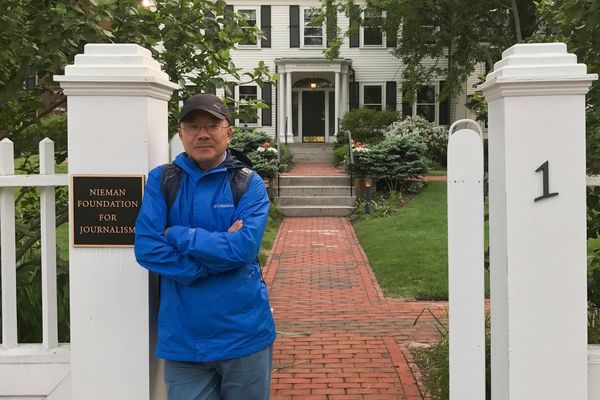The call of the western grasswren once again quivers on the winds across Dirk Hartog Island in Western Australia, breaking a century of its absence.
The rare species was recently translocated to the island – known as Wirruwana by the Malgana People – with wrens from two distinct areas in Shark Bay.
This was despite initial questions as to whether birds from the two groups would be trilling in different languages.
Department of Biodiversity, Conservation, and Attractions research scientist Saul Cowan said the western grasswren has disappeared across vast swathes of its once expansive range.
"It's actually a species of bird that's probably undergone one of the biggest declines of any Australian birds."
The small ground-dwelling birds can still be found on the Eyre Peninsula in South Australia and in the Gascoyne region of Western Australia.
"There's two remnant populations in Shark Bay … around the Peron Peninsula and Hamelin Station Reserve, and the pastoral properties around there," Dr Cowan said.
There also used to be a sub-population on Wirruwana but disappeared like much of the other native fauna.
"They [western grasswren] were cited there in the early 20th century, but around 1920 it seems they disappeared."
Dr Cowan said the bird's disappearance was likely to be a combination of the grazing-browsing by stock and feral goats, as well as predation by feral cats.
Do they speak different languages?
After years of research considering everything from genetic diversity to differences in birds calls, the first translocation of the species has been successfully completed.
University of Western Australia PHD candidate Aline Gibson Vega has focused her research on the Hamelin Reserve and Peron Peninsula sub-populations in preparation for the translocation.
One of the questions that arose was whether birds from the two locations would have different dialects.
While birds call for all sorts of reasons, Ms Gibson Vega said territorial singing was particularly important for the grasswren.
"In the mornings and sometimes in the evenings, they will participate in singing and essentially defend their patch," she said.
"Then you'll get neighbours responding, acknowledging that they're there and those neighbours also defending their patch."
While there were some differences in the territorial calls, they weren't different enough to indicate the sub-populations had their own dialects.
Nor was it enough to pose a problem when combining birds from other areas.
"They didn't care which bird was singing, or our simulating of who was singing. They just didn't like the fact that there was a bird in their territory and they sang back," she said.
Researchers landed on a base population of 85 birds for the island, enough to provide genetic diversity without adversely impacting the mainland populations.
Bush Heritage Australia senior ecologist Michelle Hall said catching the birds was a feat in itself.
"They're elusive birds … so finding them and catching them was really challenging," Dr Hall said.
"We had 12 people working in four teams of three every day for two weeks, just working to catch those 85 birds that were translocated."
At the end each day, the birds were flown by helicopter to Wirruwana.
"I felt pretty emotional, you know, seeing my birds heading off in the chopper, flying across this great blue, blue ocean to get to the new island home."
Establishing the birds on the island, Dr Hall said, would also help to safeguard the future of the species.
"When you have populations restricted to relatively small areas, even if they are healthy and in good shape, it does mean they're a bit more vulnerable if a cyclone or a big fire or something goes through.
"You then have this insurance population on the island to make sure the species survives," she said.
Halfway to 1616
The translocation of the western grasswren is part of the Return to 1616 ecological restoration project, seeking to restore conditions on the island similar to those witnessed by Dutch explorer Dirk Hartog on his arrival more than four centuries ago.
"The reintroduction represents the halfway point in terms of the number of species that we're seeking to establish on the island," Dr Cowan said.
Already six mammals species have been moved to the island, and so far all are taking to it.
"All species are breeding and establishing in new areas, which is exactly what we want to be seeing at this stage."
"We're quite optimistic that things are going pretty well at the moment," he said.







